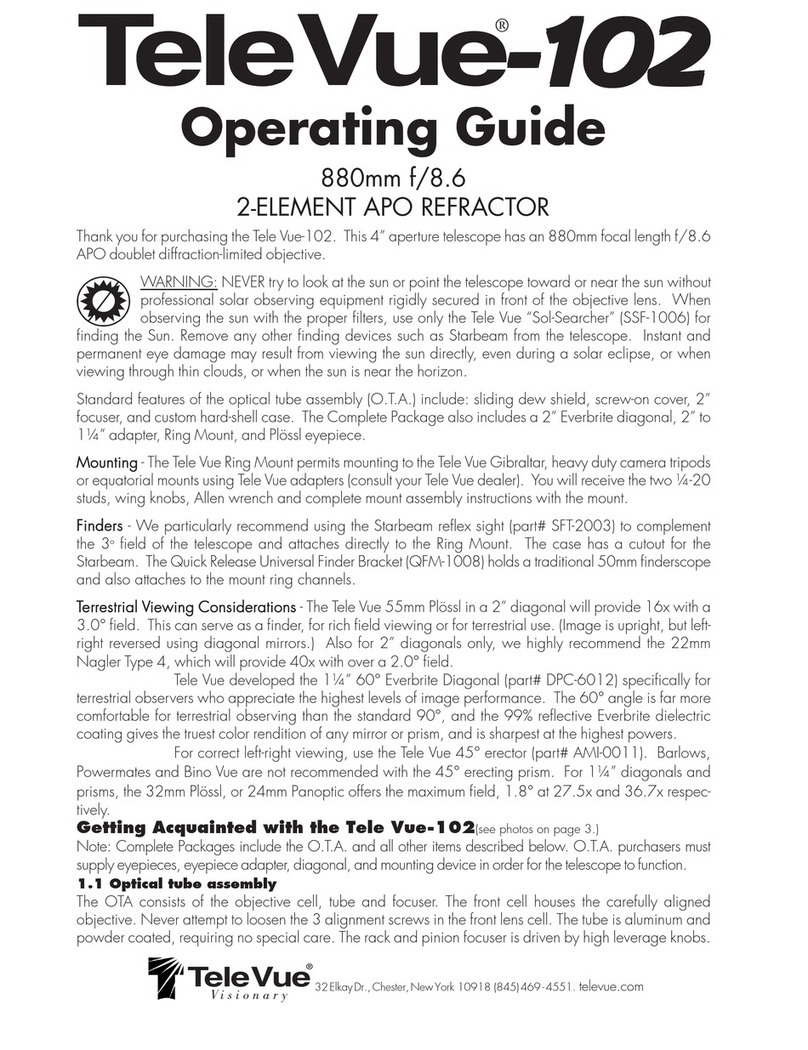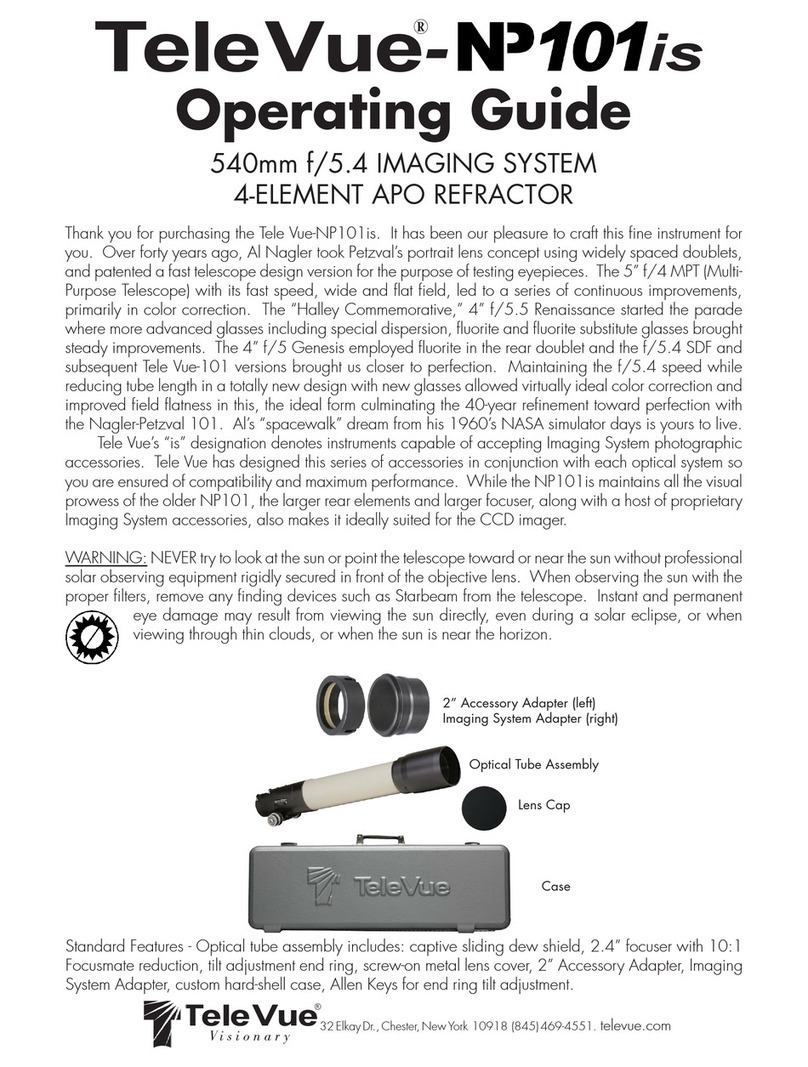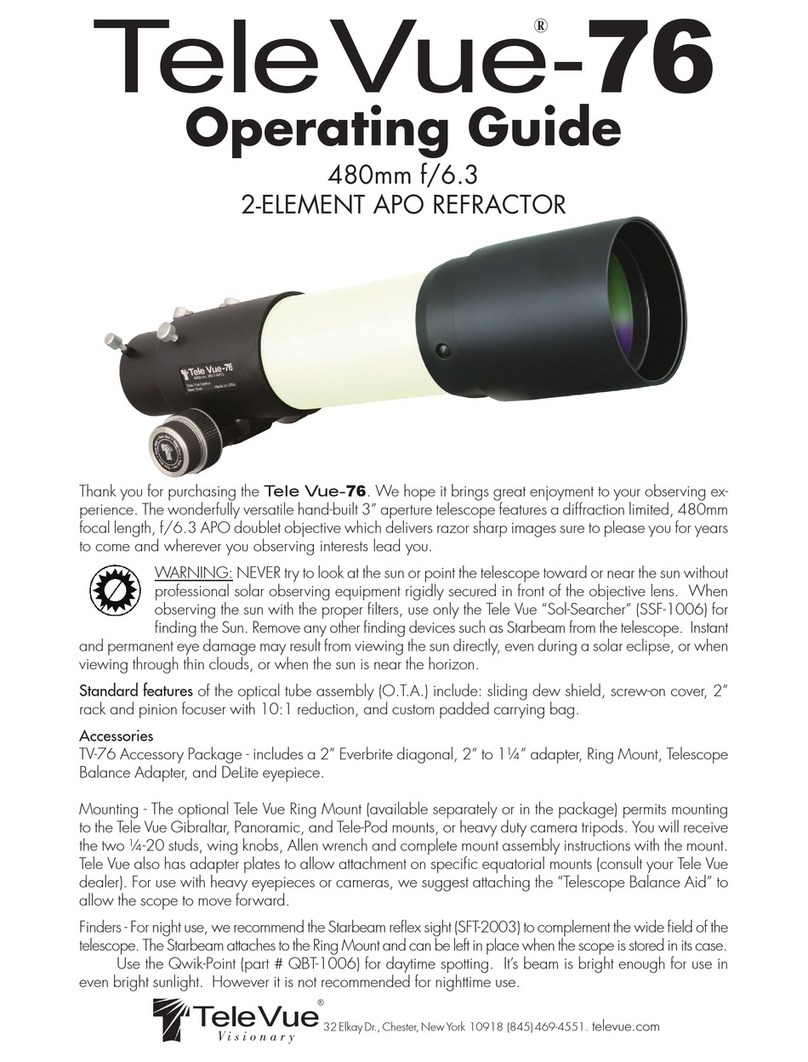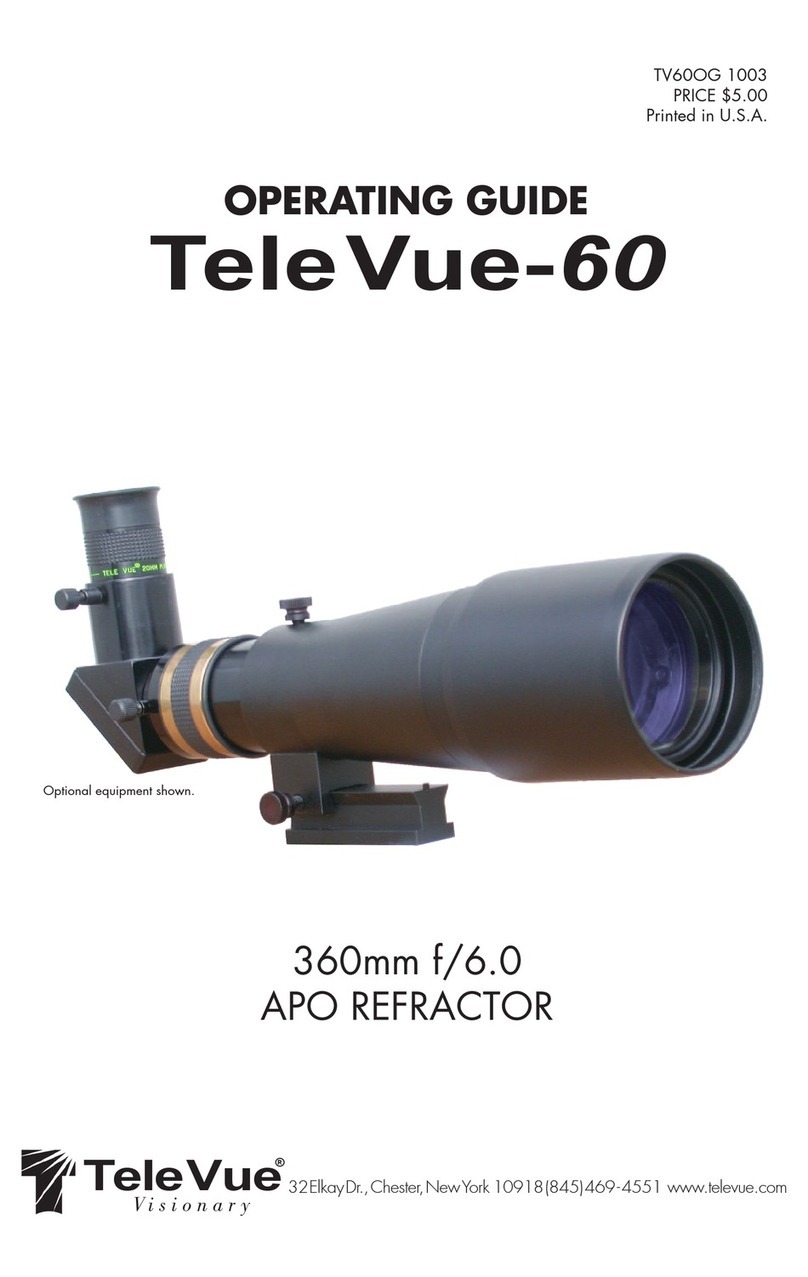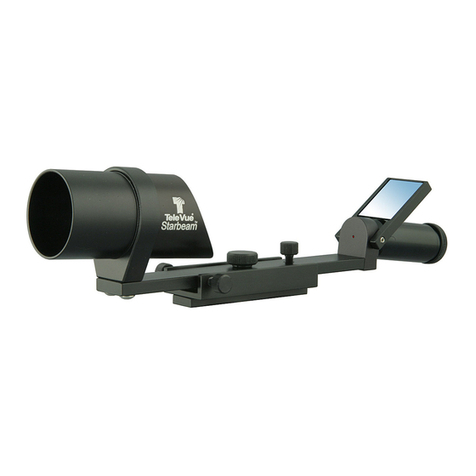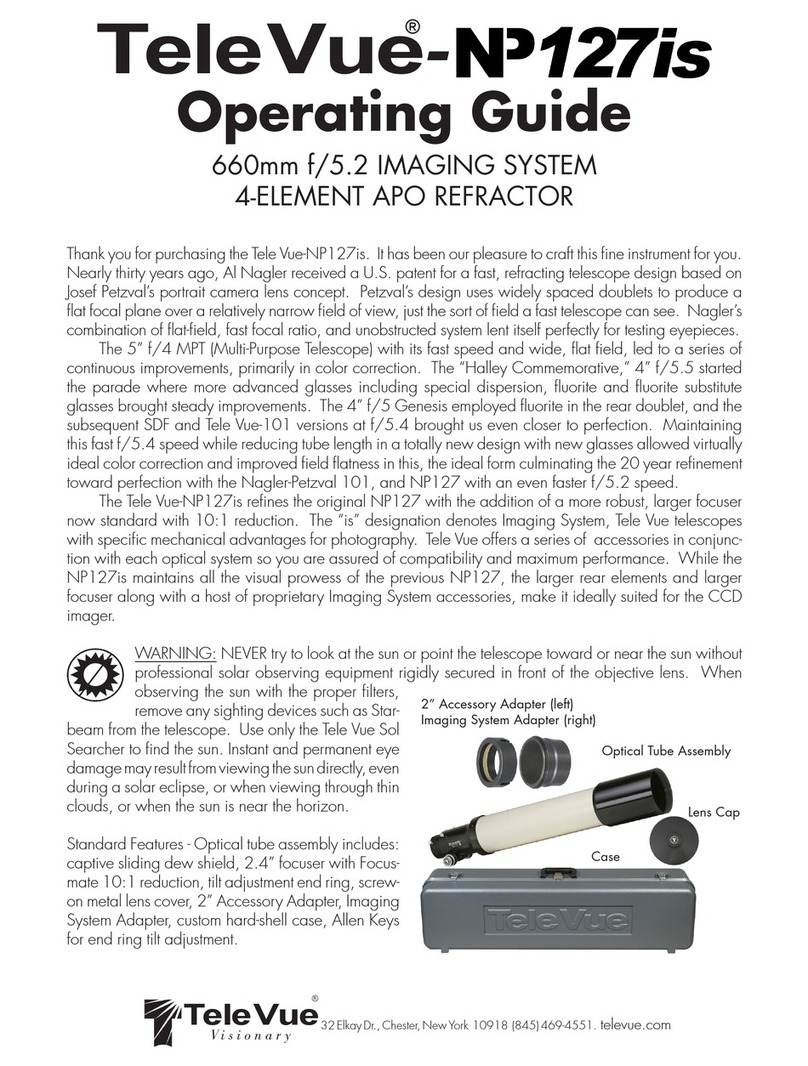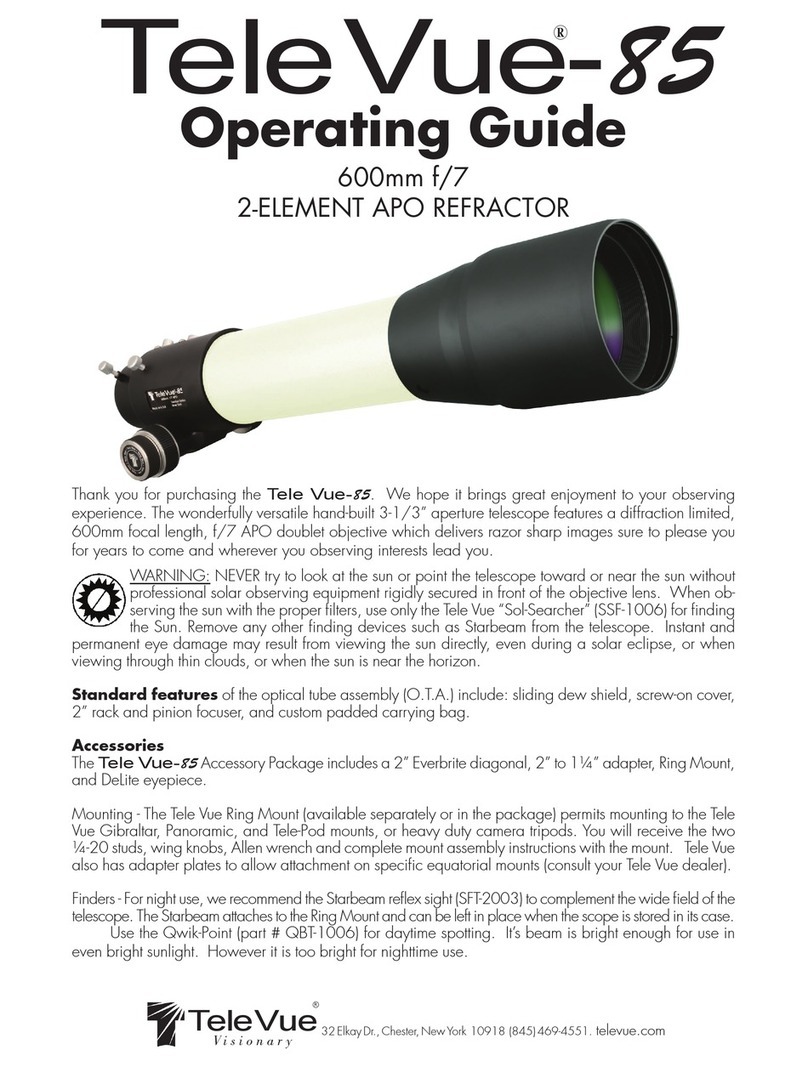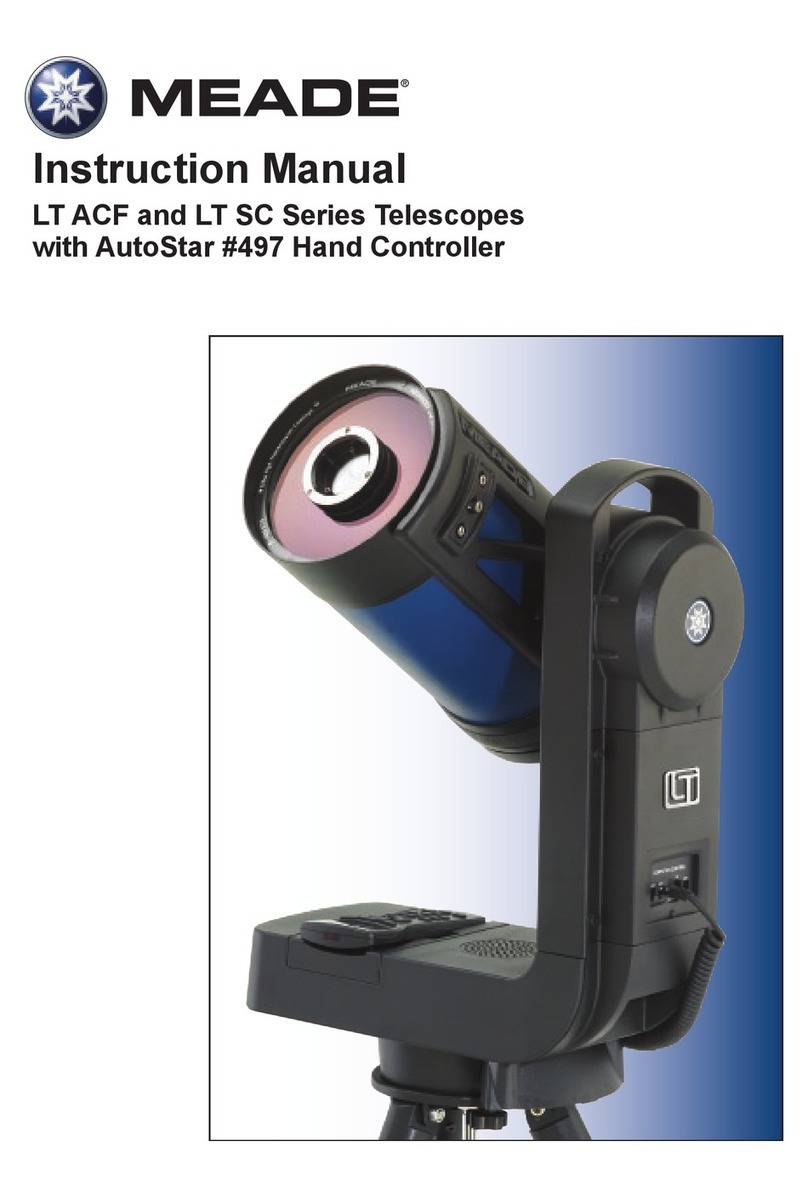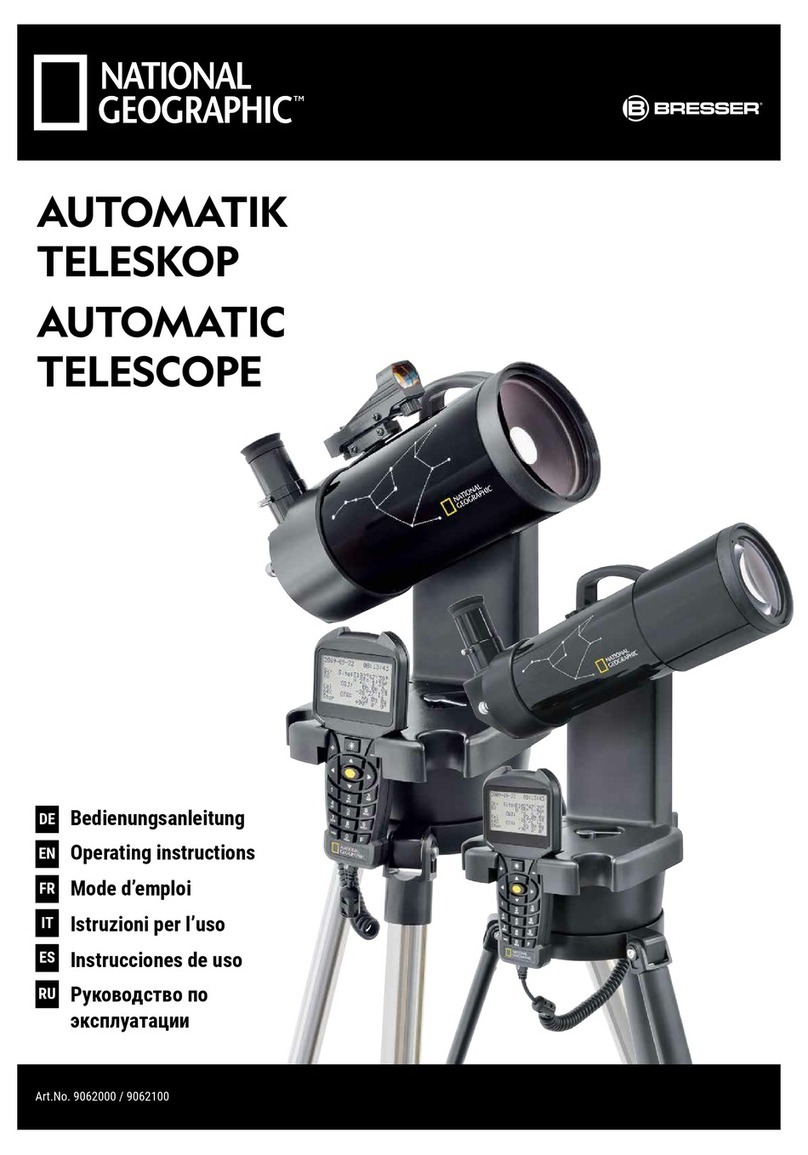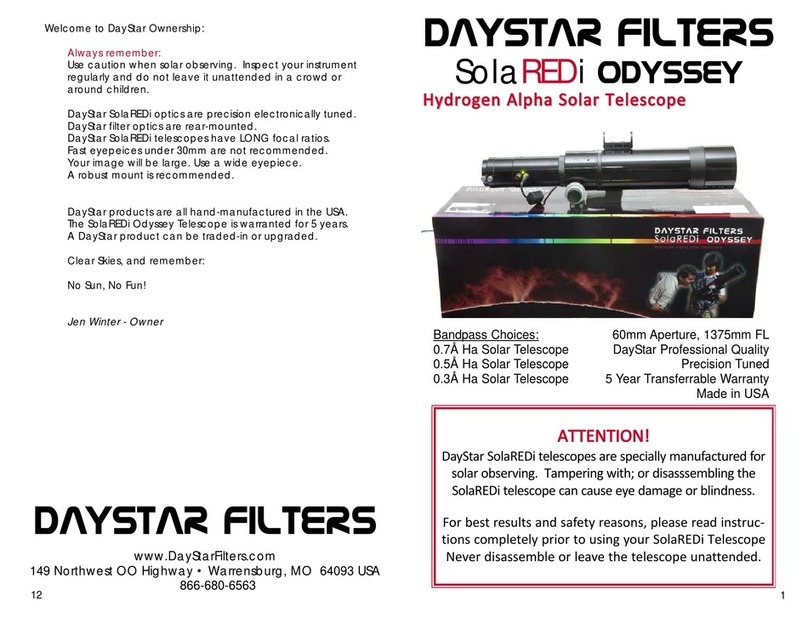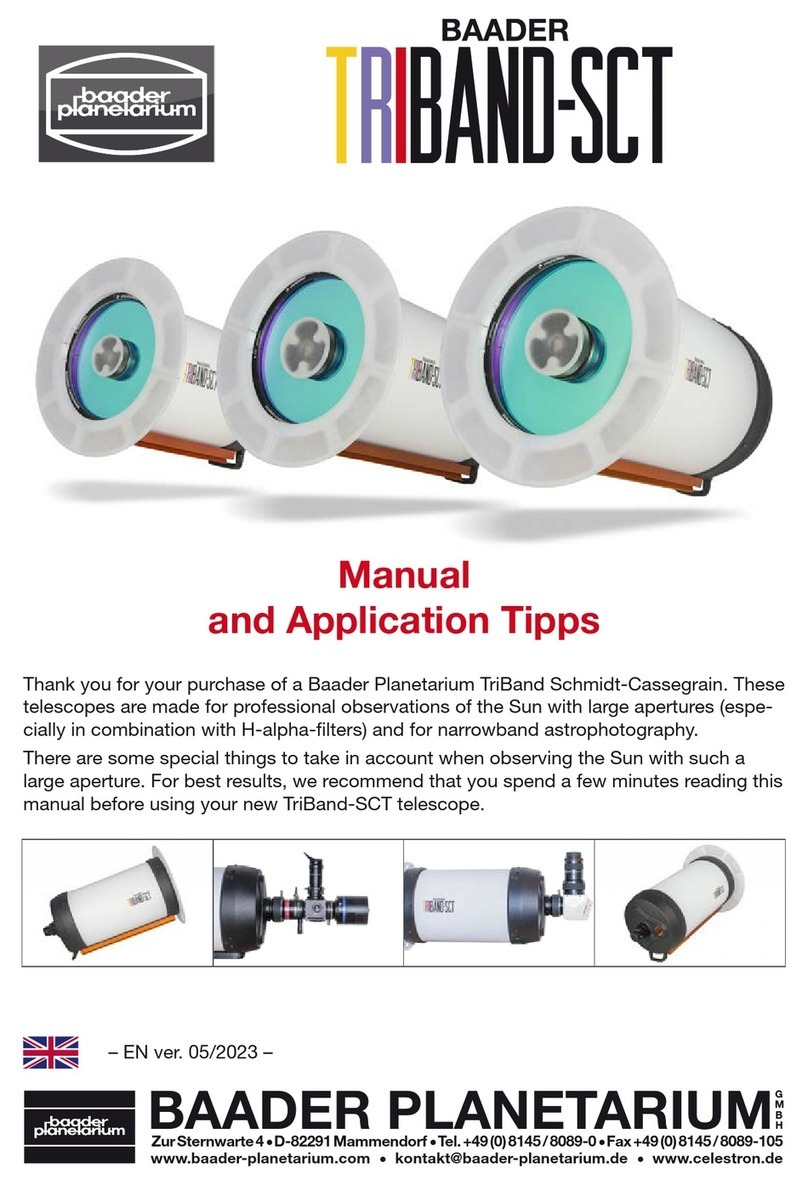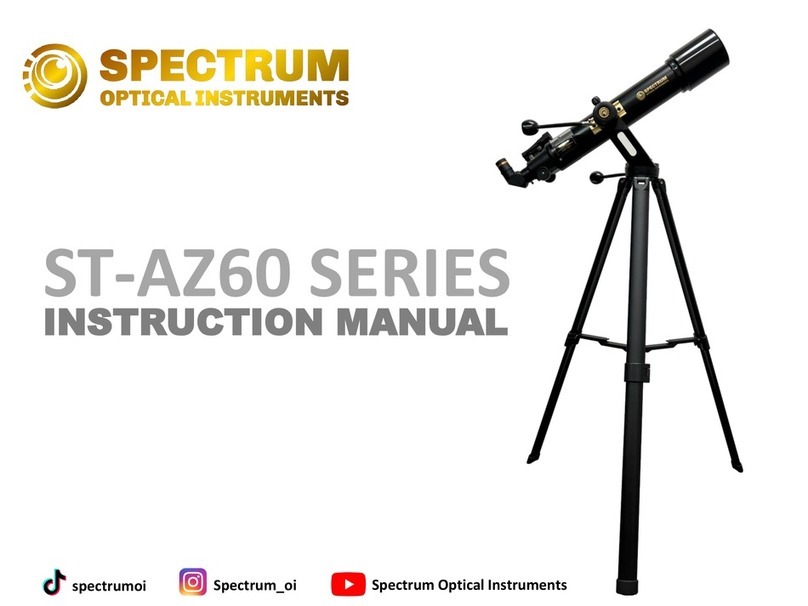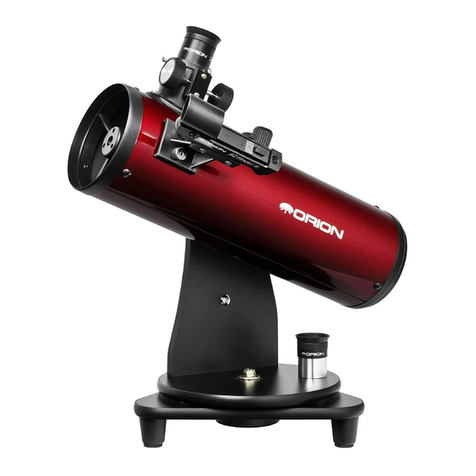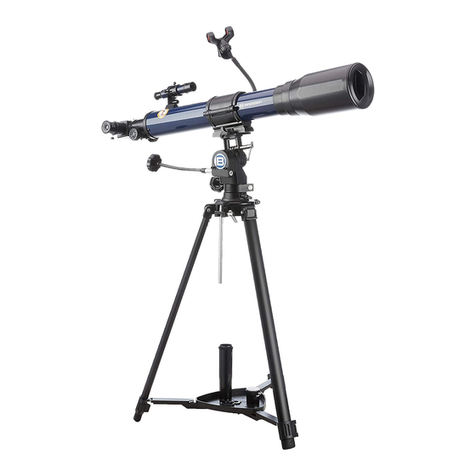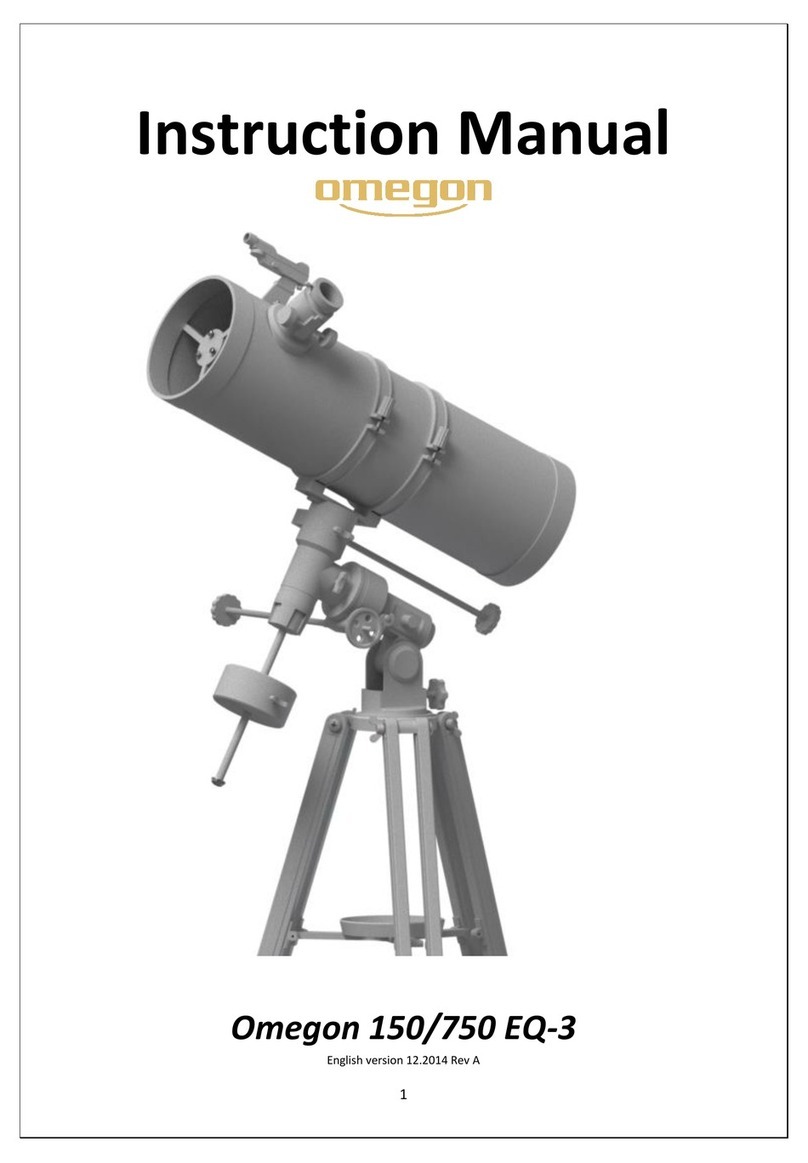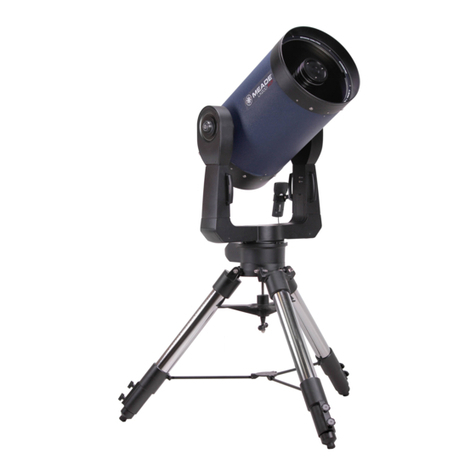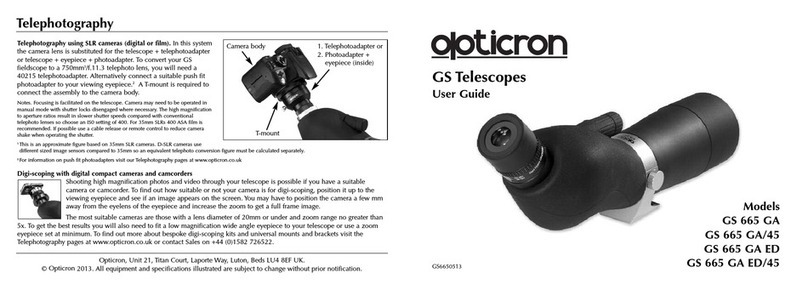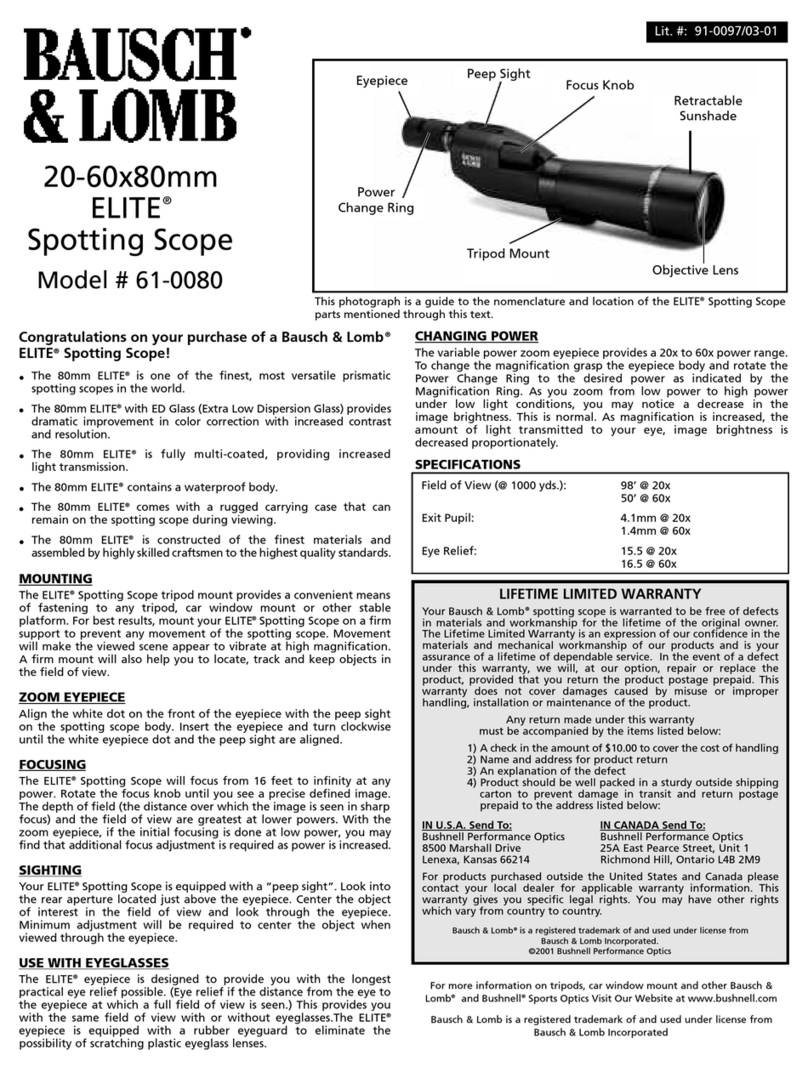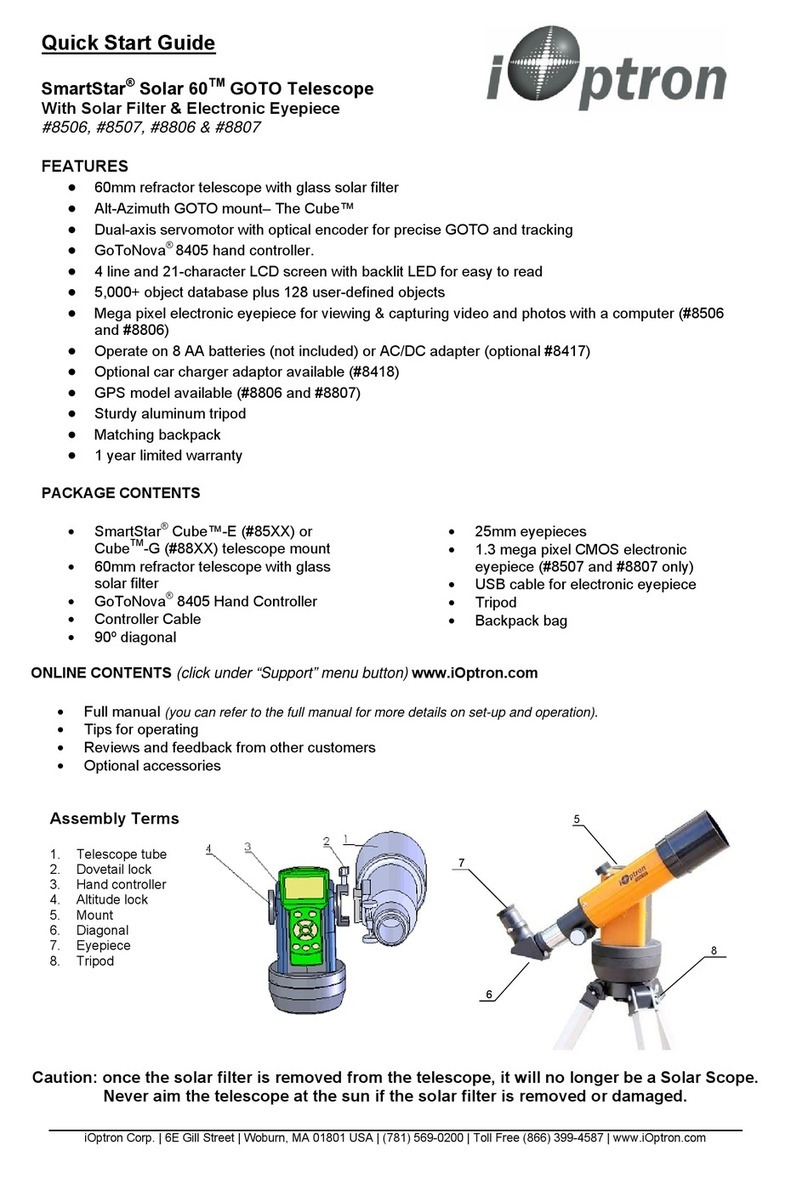
8
sensor formats when the sensor pixels are < 6 µm, you must use the Large Field Corrector (LCL-1069). For
optimum performance, the distance from the base of the male thread on the camera-facing side of the LCL-
1069 to the camera sensor must be 2.64”. In order to determine how much Back Focal Length (BFL) you
need to maintain between the camera face and LCL-1069, you need to know the distance from the chip
to the faceplate of the camera. This should be specified in the camera’s documentation; call your camera’s
manufacturer if it is not. Simply subtract “chip to faceplate” distance from 2.64” to get the spacing required
from the Large Field Corrector to your camera faceplate. If accessories such as filters wheels or off axis guid-
ers are used, their path length must also be deducted from the 2.64” figure.
Since there are tolerances in all manufactured parts, it may be necessary to vary the spacing slightly
from the nominally calculated value. Should your star images in the four corners look equally slightly elon-
gated, try using the next smallest increment of threaded spacer with either the 0.040” (TLF-0040), 0.080”
(TLG-0080), or both in between the threaded spacers to fine tune the image.
4.2a) 0.8x Reducer (NPR-2073) Usage. To gain more field with chips up to full-frame, use the 0.8x Reducer
(NPR-2073). For One Shot Color and DSLR cameras, use a Back Focal Length (BFL) of 68mm. In the case
of imaging in full-frame monochrome with LRGB or HST palette filters, a BFL of 50mm should be used (this
includes a +1mm shift required for a single 3mm filter). If your imaging stack exceeds 50mm due to ac-
cessories, then use the 68mm distance. Just subtract either of these distances from the “chip to faceplate”
distance to get the spacing required from NPR-2073 to your camera faceplate. If accessories such as filters
wheels or off axis guiders are used, their path length must also be deducted from the 68mm figure. For all
setups, use Extension Spacers to minimize draw tube out-travel to no more than ¾“ (20mm). See NPR-2073
instruction sheet for details.
4.2b) Special Note for ZWO Usage. ZWO instructions are standardized on producing an imaging stack
with 55mm Back Focal Length using their various cameras, filter wheels, Off Axis Guiders, and adapter
rings. In order to properly back space the sensor behind our optical accessories, simply subtract 55mm from
our recommended spacing distance and add back 1mm for every 3mm of filter thickness. Using our 2.64”
(67mm) spacing example for the Large Field Corrector with a 3mm filter, the math is as follows: 67mm –
55mm + 1mm = 13mm of additional spacing is required. Our TRG-1072 (M42x0.75mm) or M54-1073
(M54x0.75mm) adapters (6.6mm of path) will connect to the telescope end of the ZWO 55mm stack (in
some cases use ZWO’s M48-M42 zero path length converter). Next, simply thread on our TLA-0250 (6.4mm
of path) to space the camera sensor to the required path length.
Likewise, employing ZWO’s 55mm stack with the 0.8x Reducer (NPR-2073), requires use of the
68mm back focus option in all cases as the 50mm option is not possible. This spacing with a 3mm thick
filter requires: 68mm – 55mm + 1mm = 14mm more spacing. Pairing our TRG-1072 or M54-1073
(6.6mm of path) adapters with the TLA-0250 (6.4mm of path) and TLF-0400 (1mm of path) exactly makes
up that 14mm requirement.
4.2c) To gain more magnification, the 2x (PMT-2200) and 4x (PMT-4201) Powermates are recommended
for best performance. Start by inserting the 2” Accessory Adapter into the end of the focuser. (Since in-
creasing the magnification will reduce the field, the large opening provided by the Imaging System Adapter
is of no benefit.) The arrangement of parts necessary is: camera with a T-ring attached, Powermate with
corresponding T-ring adapter (PTR-2200 or PTR-4201) attached, 3.5” Extension Tube (X3C-0009), to
make up focus travel, and telescope.
If you prefer to use the threaded I.S. adapters, you would need three 1” spacers (3x TLD-1000) plus
the 2” Accessory Adapter (A2A-1107). Start by inserting the ISA into the end of the focuser. The arrange-
ment of parts necessary is: camera with a T-ring attached, Powermate with corresponding T-ring adapter
(PTR-2200 or PTR-4201) attached, 2” Accessory Adapter (A2A-1107) and three 1” spacers (3x TLD-1000)
to make up focus travel, and telescope.
There are certainly a variety of ways of setting up the Tele Vue-NP127is for photography!












